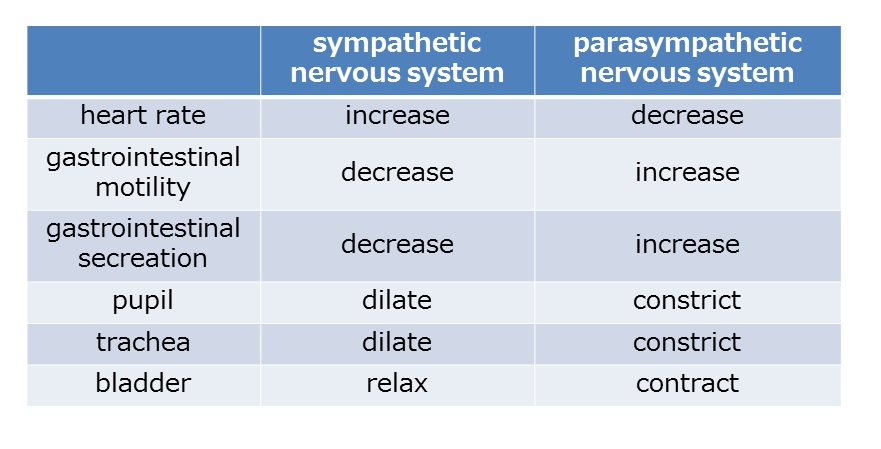Nerv06/introduction/dual innervation by the sympathetic and parasympathetic nerves
| The sympathetic nervous system is the part of the autonomic nervous system that facilitates functions needed for exercise and the parasympathetic nervous system is the part that facilitates functions needed for the gastrointestinal digestion and absorption, etc. |
The autonomic nervous system, which is a part of the peripheral nervous system, is functionally divided into the sympathetic and parasympathetic nervous systems. The sympathetic nervous system facilitates functions needed for exercise, and the parasympathetic nervous system facilitates functions needed for the gastrointestinal digestion and absorption, etc.
Each organ receives innervation from both systems (dual innervation) which have opposing effects (antagonistic innervation). For example, the heart activity (such as heart rate and output) is facilitated by the sympathetic nervous system, and inhibited by the parasympathetic nervous system. Meanwhile, activity of the gastrointestinal tract, ureter and bladder (such as contraction, mobility and secretion) are facilitated by the parasympathetic nervous system, and inhibited by the sympathetic nervous system.
Challenge Quiz
Dual innervation and antagonistic innervation are characteristics of the somatic autonomic nervous system.
An internal organ basically receives innervation from both one of the divisions of the autonomic nervous system, namely the sympathetic and parasympathetic nerves.
The sympathetic nervous system facilitates inhibits gastrointestinal motility.
The parasympathetic nervous system facilitates inhibits gastrointestinal motility.
The sympathetic nervous system constricts dilates trachea.
The parasympathetic nervous system constricts dilates trachea.
The sympathetic nervous system lowers elevates blood pressure.
The sympathetic nervous system lowers elevates heart rate.
The sympathetic nervous system facilitates inhibits sweating.

